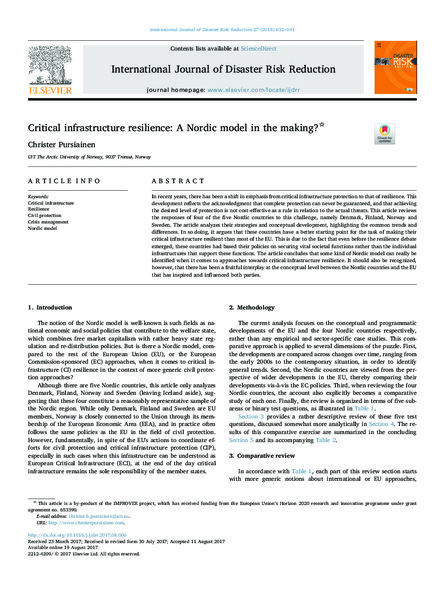
In recent years, there has been a shift in emphasis from critical infrastructure protection to that of resilience. This development reflects the acknowledgment that complete protection can never be guaranteed, and that achieving the desired level of protection is not cost-effective as a rule in relation to the actual threats. This article reviews the responses of four of the five Nordic countries to this challenge, namely Denmark, Finland, Norway and Sweden. The article analyzes their strategies and conceptual development, highlighting the common trends and differences. In so doing, it argues that these countries have a better starting point for the task of making their critical infrastructure resilient than most of the EU. This is due to the fact that even before the resilience debate emerged, these countries had based their policies on securing vital societal functions rather than the individual infrastructures that support these functions. The article concludes that some kind of Nordic model can really be identified when it comes to approaches towards critical infrastructure resilience. It should also be recognized, however, that there has been a fruitful interplay at the conceptual level between the Nordic countries and the EU that has inspired and influenced both parties
Links
Resource collections
- UN Habitat - Urban Response Collection
- Urban Response - Urban Crisis Preparedness and Risk Reduction
- Urban Response Collection - Community Engagement and Social Cohesion
- Urban Response Collection - Economic Recovery
- Urban Response Collection - Environment and Climate Change
- Urban Response Collection - Housing, Land and Property
- Urban Response Collection - Urban Crisis Response, Recovery and Reconstruction
- Urban Response Collection - Urban Resilience